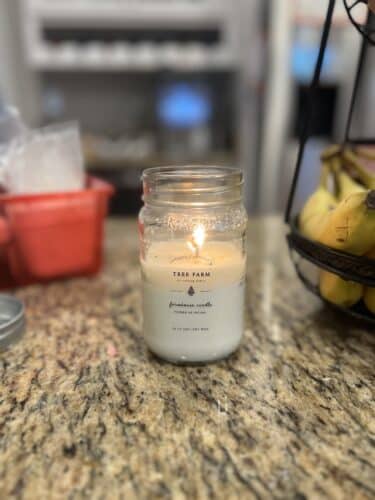Is It Bad to Burn Candles in the House? Candles and Indoor Air Quality [With Pictures]
“Is It Bad to Burn Candles in the House?” This question often arises for those who enjoy the ambiance and fragrance that candles provide, but are concerned about their impact on indoor air quality. Understanding the effects of burning candles and how to mitigate potential risks is essential for maintaining a healthy home environment.

Healthy candle options like Antique Candle Company can be great options to lower any air quality risks.
1. The Impact of Candle Composition on Air Quality
The core concern lies in the composition of candles. Commonly made from paraffin wax, a byproduct of petroleum, these candles can release harmful toxins like toluene and benzene when burned. These substances are known carcinogens and can significantly degrade indoor air quality, posing health risks in poorly ventilated spaces.
However, not all candles are created equal. Alternatives such as soy or beeswax candles burn cleaner and produce fewer pollutants than their paraffin counterparts. While these are better options, the impact on air quality can still vary depending on the candle’s quality and ingredients.
2. Soot and Particulate Matter Concerns
Another issue is the production of soot – fine black particles resulting from incomplete combustion. This soot can contribute to indoor air pollution and respiratory problems, especially if candles are burned improperly, such as with long or untrimmed wicks, or in drafty areas.
3. The Role of Fragrances and Essential Oils
Many people choose scented candles for their pleasant aromas. However, the fragrances and essential oils used can also affect air quality. Synthetic fragrances may emit volatile organic compounds (VOCs) when burned, potentially affecting those with allergies or asthma.
4. How to Mitigate Risks
Addressing the question, “Is it bad to burn candles in the house?” requires a balanced approach. Here are some tips to reduce risks:
- Select Candles Carefully: Choose candles made from natural materials like soy or beeswax, and with cotton or paper wicks to minimize soot and toxin release.
- Ensure Adequate Ventilation: Good ventilation is crucial when burning candles. Open windows or use fans to help disperse any pollutants.
- Maintain Candle Wicks: Regularly trim wicks to about 1/4 inch to reduce soot production.
- Limit Candle Burning Time**: Prolonged burning can lead to increased pollutant levels, so limit the time candles are lit.
- Choose Unscented Candles for Sensitive Individuals: If you’re sensitive to fragrances, opt for unscented candles to avoid VOC exposure.
- Clean Regularly: Keep your home clean to remove soot and residues from candle burning.
- Consider Alternatives: Electric or battery-operated candles are safe alternatives, especially if air quality is a major concern.
- Use a whole house air purifier to offset air quality issues.
While burning candles in the house can negatively impact indoor air quality, it doesn’t have to be inherently bad. By choosing healthier candle options, ensuring proper ventilation, and adopting best practices for candle use, you can enjoy their benefits without compromising your home’s air quality. The key is in making informed choices and using candles responsibly.